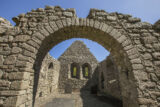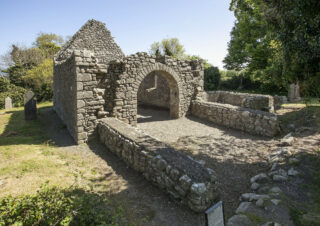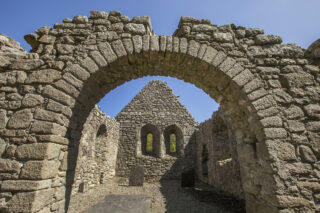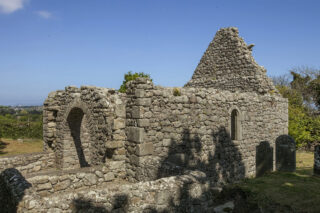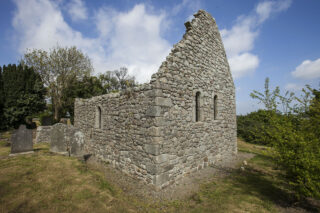Fógra
WARNING: It should be noted that these sites are unguided and a level of care and caution should be maintained during all stages of your visit. The Office Of Public Works (OPW) will not be held responsible for any damages, injuries, or losses that occur
Tully Church
Tully Church is situated within an oval enclosure at the foot of the Dublin Mountains, said to have once been part of a larger ecclesiastical site. Today, it is comprised of a nave and chancel. The nave is believed to be of an earlier date, possibly 11th century, while the chancel is from the late 12th or early 13th century. Rather unusually, the chancel is wider than the nave. By the 1630s the Church was in a state of ruin.
Dedicated to the patron saint Brigid, Tully was originally referred to as Tulach na nEpscop – the Hill of the Bishops.
Tully Church, and its surrounding lands, were granted to the Holy Trinity Church in Dublin, likely around the 1160s, by Sitric Mac Torcaill, then the Hiberno-Norse ruler of Dublin. Tully’s lands became an extension of those at Kill of the Grange. There are 6 churches within a 4.5km radius of Tully, forming a close concentration of early churches in the area.
The graveyard was used as the burial place for the Walsh family of Carrickmines Castle in the late 12th century.
Three Rathdown grave-slabs were found on the site, and were moved for protection in 1989 by the OPW. It is likely these are of secular origin.
Two High Crosses exist within the area, one a ringed cross to the north of the church, and the other to the north-west in a field.
Visit Historic Environment Viewer for more information on Tully Church & High Crosses
Protect our Past - Click here to read about the importance of protecting our country’s unique heritage sites
This national monument is protected in accordance with the National Monuments Acts 1930 to 2014
